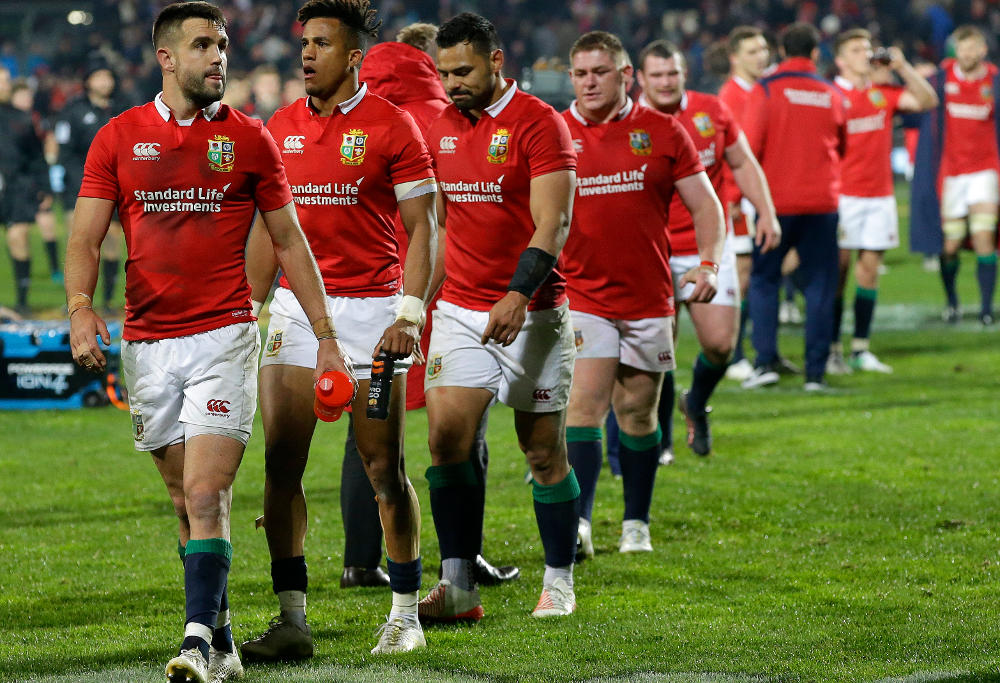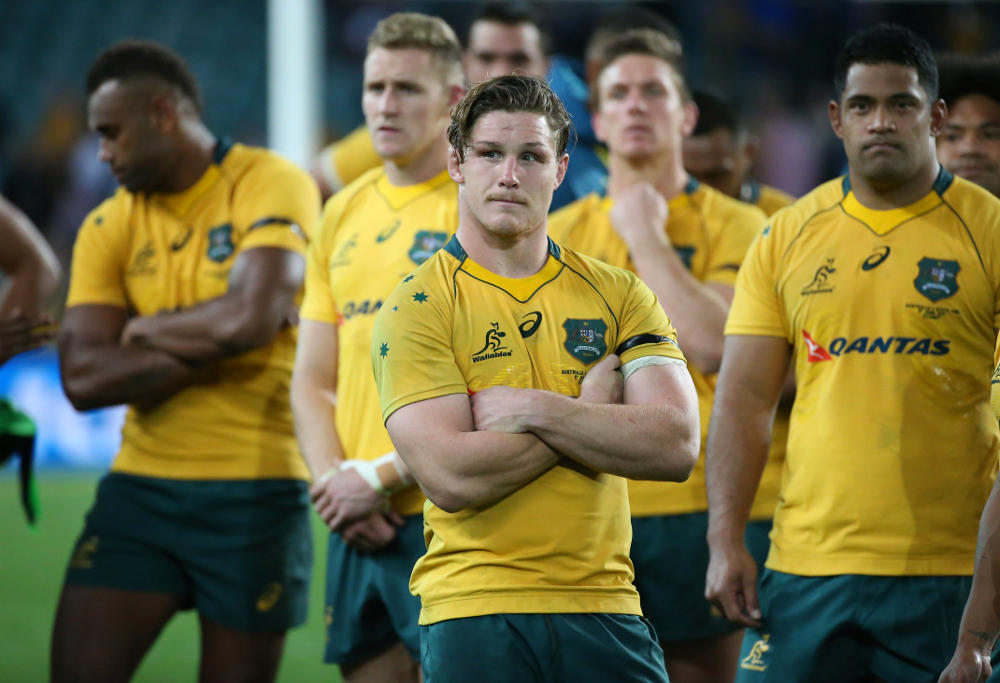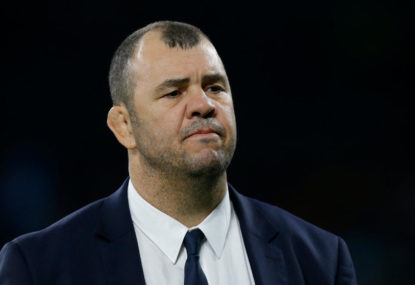With due respect to Tonga, Wales and the international women’s sides, there were three top-line matches in Australia and New Zealand over the weekend. All three winners employed clear, distinctive game plans, albeit it very different ones.
As for the losers? Two weren’t good enough to play the way they wanted to. The third? Let me know when you’ve figured out what their game plan was. But more on the Wallabies later.
Fans accustomed to the All Blacks starting their Test season slowly will have recognised the first half hour of their match against Samoa as ‘business as usual’. Some sweet stepping embarrassed Sonny Bill Williams – no doubt catching Warren Gatland’s eye – and Samoa were sharp and industrious.
But once the All Blacks kicked into gear, the class gulf became evident and Samoa was no longer able to make inroads with the ball or build sufficient defensive intensity, after which New Zealand’s conservative approach, marked by plenty of kicking, gave way to attack at all costs to exploit the space offered.
Make no mistake, Samoa is not a 0-78 team. They will be more than a headache for Wales next weekend at home. They were simply dreadfully unlucky to strike the All Blacks in an irresistible mood with not a moment to waste in their preparation for the Lions series.
If their first two tries were scratchy, the third, to Ardie Savea, was a work of art, punctuated by superb awareness by impressive centre Anton Leinert-Brown, who, from a set-piece move, angled right to supposedly link with his winger before a lethal prop and straighten put Savea into clear space on his left.
The All Blacks’ scoring power was astonishing. Everybody knows it’s there, but to see it unleashed as it was in a magical 50-minute spell was breathtaking. Coach Steve Hansen will be breathing easier too after emerging from the match injury free and watching two of his players on return from injury, Ben Smith and Jerome Kaino, both turn in strong performances.
Next week will, of course, be very different, but as long as the self-belief gained from this performance doesn’t tip into over-confidence, then the All Blacks enter the series in a very good place.
As do the Lions, regardless of what happens in their match on Tuesday against the Chiefs with their midweek team. There is nothing subtle about Gatland’s game plan – set piece efficiency, an impenetrable wall of defence, offer the opposition no scraps of broken play, take the points on offer – but it is wholly distinctive and has perfectly suited the slippery conditions in Christchurch and Rotorua.
Ironically, their tactic of kicking to contest and placing pressure on the receiver was vindicated early, although they forgot the other side of that coin is dealing defensively with the same thing: George North failing to tidy up a kick and presenting Liam Messam with a try.
From then on, the Lions offered the Maori only the most meagre of scraps, their pack grew increasingly dominant and their ‘Selleys’ defensive line offered no gaps on the counter attack, increasingly pushing the Maori backline deeper and deeper in a futile search for running room.

(Image: AP Photo/Mark Baker)
Those quick to condemn any of the Maori backs for their ineffectiveness or desperate low percentage options might do well to remember that the essence of rugby remains winning the battle for possession and providing front-foot ball.
Anyone looking for scapegoats thus needs to eye off the low numbers first, exempting No.6, where Akira Ioane manfully stayed in the contest for the whole 80 minutes, signalling his growing maturity.
The immediate response of many New Zealand fans, and some in the media too, that the Lions type of play is boring or somehow less worthy than a free flowing contest full of skilful backline tries is as predictable as it is totally misplaced. Long may rugby be a contest of ideas and cause for celebration when divergent approaches are put to the test, as they surely will be next weekend.
The problem for the Lions is that for them to have the match played on their terms against the All Blacks, who won’t allow the same armchair ride for the excellent Conor Murray and Jonathan Sexton, they need to have it played on their terms for the whole match.
By contrast, such is their scoring power, the All Blacks may only need, say, 25 to 30 per cent of the match played on their terms, a few passages of broken play here or there, as long as they limit any early points damage and don’t panic, as the Maori did.
Maro Itoje, Sean O’Brien and Tadhg Furlong gave the Maori nothing but grief at the breakdown, but for all of their grunt and industriousness – which will force the All Blacks to commit running forwards in much tighter if they want to protect Aaron Smith – it is a huge ask to keep this going for the full 80 minutes against the world champions, all the while retaining the discipline not to deviate from the game plan.
The other true strength of this All Blacks side is that while everyone marvels at their electric try-scoring ability they, as demonstrated against Ireland in November, equally relish the opportunity to confront their opposition with sheer physicality. In that respect, Sam Cane and Kaino become key players next week.
As much as the All Blacks respect the Lions and will be acutely aware of their ability to control long periods of the game, by no means will they fear them. And, as the Messam try showed, there are fragilities waiting to be exposed when the blowtorch is applied in the reverse direction.

(AAP Image/ David Rowland)
A clear game plan was also in evidence in Sydney, Scotland playing within their limitations in attack and nullifying the Wallabies potency by targeting and competing hard at the breakdown. All of that was enough to keep them ahead of the game, yet what deservedly won it for them after struggling to put any incisive attacking play together all match was a fine, sweeping try to Hamish Watson that seemed to come out of nowhere.
Weak exit kicking by replacement halfback Henry Pyrgos helped keep the Wallabies in the red zone for the remainder of the match, but a combination of gritty Scottish defence and a lack of urgent clarity to Australia’s approach sealed Scotland’s 24-19 victory.
After Bernard Foley found Israel Folau in acres of space for Australia’s first try there was a sense that, once the initial breach had been made, the Wallabies would have the confidence to go on with the job.
But instead two brain snaps followed; Dane Haylett-Petty weakly grubbering the ball away when hot on attack, and then, from the quickly taken dropout, Foley stupidly giving up a soft sin-binning.
Without their regular kicker, Scott Higginbotham and Will Genia telegraphed a scrum exit that Finn Russell, who was excellent throughout, easily read for a charge-down try. While Genia copped the blame, the real culprit was sitting on a white chair watching on, near half-way.
What followed resembled a Waratahs match. Lots of busyness without any real impact (Sam Carter, Ned Hannigan and Karmichael Hunt), wingers standing around doing not much at all (Eto Nabuli) and unforced skill execution errors (Tatafu Polota-Nau).
But most of all, captain Michael Hooper charging around trying to do everything himself and left scratching his head afterwards why his example wasn’t being followed.
In truth, Test match rugby is much more than all of the other kids following what the best kid does, and the sooner Hooper and Michael Cheika accept this and develop a more definable team game plan, the better. It doesn’t need to be New Zealand’s all-out attack or the Lions’ pressure and strangulation method or Scotland’s harry and poach, but whatever it is Wallabies fans – and Australian rugby in general – are desperate for something that defines them. Something, that is, other than mediocrity.
Whatever the game plan is that Cheika concocts, it must certainly include greater respect for the conventions of Test rugby. Not taking penalty kicks when only five points behind with ten minutes to play reveals only an immature team yet to truly learn anything from last year’s six from 16 record.

(Image: AAP Image/David Moir)
To finish with three amusing touches and a groan from the weekend, firstly Welsh replacement winger Cory Allen, copping a massive hit from Tonga’s David Halaifonua that at first viewing looked brutally suspicious but which on review the officials correctly ruled as fair.
Instead of making a meal of it, Allen bounced straight back to his feet and, watching the replay along with everybody else, could only laugh and shake his head in equal parts embarrassment, acknowledgement to his opponent and ‘don’t worry, let me have another crack at him’.
It was superb interplay, a videotape of which should be on its way right now to Nicolas Sanchez and Marty Banks.
Also notable was Maori fullback James Lowe stepping forward to provide a mid-game lesson on the breakdown laws to his new Leinster teammate Furlong, made all the more amusing because it didn’t appear to be meant in a condescending or smart-alec way. No doubt Tadhg had some tips for James later too, over a beer, on how to catch the high ball.
The almost-final word is reserved for that man of many words, referee Wayne Barnes, who has accidentally discovered that the best way to keep Phil Kearns quiet in the commentary box is to talk all over him.
On balance, clear and frequent communication from referees is a good thing, but Barnes took this to such a level in Sydney that he made the television commentators redundant, interrupting himself only to blow his whistle.
The phrase ‘less is more’ is not something that Barnes understands or ascribes to, although ‘less is less’ is the approach taken by six nations rugby, with respect to France’s 100th-minute win against Wales in Paris in March, where a more direct Holly Holm method would have been far more appropriate.
As a result of France’s ‘not complying with the head injury assessment protocol and relevant laws of the game’ – code for cheating – they have finally received a ‘letter of reprimand’ from the Six Nations UIRG, or ‘untoward incident review group’.
Setting aside the image of Six Nations investigators in flak jackets busting out of the back of armoured vehicles, perhaps the 14 weeks it has taken to deal with the matter was to allow France ample time to prepare its wrist for a meek slapping, and for the Six Nations wet bus ticket to soften.
Get in touch with a Daikin dealer today so you don’t sit and suffer through another cold winter while watching the rugby this year. Trusted by many and suitable for the Australian lifestyle, Daikin really is The Best Air Anywhere.
































































































